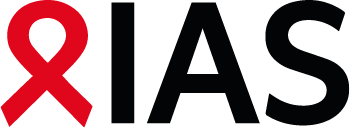Share Abstract
HIV controllers maintain a population of highly efficient Th1 effector cells in spite of persistently low viral antigenemia
Abstract Content:
Background: HIV Controllers are rare individuals who
spontaneously control HIV replication in the absence of antiretroviral therapy.
To identify parameters of the CD4 response that may contribute to viral
control, rather than merely reflect a persistently low viremia, we compared the
T helper profile in two groups of patients with more than 10 years of viral
suppression: HIV Controllers from the ANRS CO18 cohort (n=26) and efficiently
treated patients (n=16).
Methods: Cells specific for immunodominant Gag and CMV peptides were evaluated for the production of 10 cytokines and cytotoxicity markers, and were also directly quantified ex vivo by MHC class II tetramer staining.
Results: HIV Controller CD4+ T cells were characterized by a higher frequency of IFN-γ production, perforin+/CD107a+ expression, and polyfunctionality in response to Gag peptides. While IL-4, IL-17, and IL-21 production did not differ between groups, treated patients cells produced more IL-10 in response to Gag and CMV peptides, pointing to persistent negative immunoregulation after long-term antiretroviral therapy. Gag293 tetramer-positive cells were detected at high frequency (0.15%) and correlated positively with IFN-γ producing CD4+ T cells in the Controller group (R=0.84; P=0.01). Tetramer-positive cells were fewer in the HAART group (0.04%) and did not correlate with IFN-γ production, supporting the notion of a persistent immune dysfunction in HIV-specific CD4+ T cells of treated patients.
Conclusions: HIV Controllers maintained a population of highly efficient Th1 effectors directed against Gag in spite of a persistently low antigenemia, while patients treated in the long-term showed a loss of CD4 effector functions.
We previously reported that HIV Controllers harbored a unique population of CD4+ T cells expressing high avidity TCRs directed against Gag293. We propose that high avidity drives continuous Th1 effector differentiation in response to low antigen concentrations and explains the persistence of an activated antiviral response in HIV Controllers.
Methods: Cells specific for immunodominant Gag and CMV peptides were evaluated for the production of 10 cytokines and cytotoxicity markers, and were also directly quantified ex vivo by MHC class II tetramer staining.
Results: HIV Controller CD4+ T cells were characterized by a higher frequency of IFN-γ production, perforin+/CD107a+ expression, and polyfunctionality in response to Gag peptides. While IL-4, IL-17, and IL-21 production did not differ between groups, treated patients cells produced more IL-10 in response to Gag and CMV peptides, pointing to persistent negative immunoregulation after long-term antiretroviral therapy. Gag293 tetramer-positive cells were detected at high frequency (0.15%) and correlated positively with IFN-γ producing CD4+ T cells in the Controller group (R=0.84; P=0.01). Tetramer-positive cells were fewer in the HAART group (0.04%) and did not correlate with IFN-γ production, supporting the notion of a persistent immune dysfunction in HIV-specific CD4+ T cells of treated patients.
Conclusions: HIV Controllers maintained a population of highly efficient Th1 effectors directed against Gag in spite of a persistently low antigenemia, while patients treated in the long-term showed a loss of CD4 effector functions.
We previously reported that HIV Controllers harbored a unique population of CD4+ T cells expressing high avidity TCRs directed against Gag293. We propose that high avidity drives continuous Th1 effector differentiation in response to low antigen concentrations and explains the persistence of an activated antiviral response in HIV Controllers.
